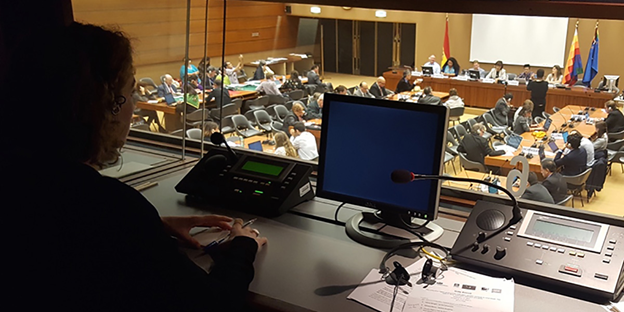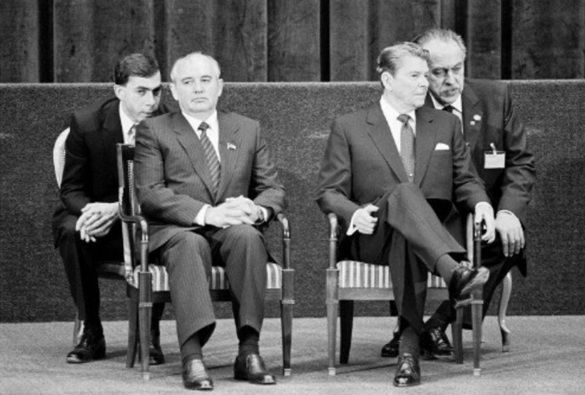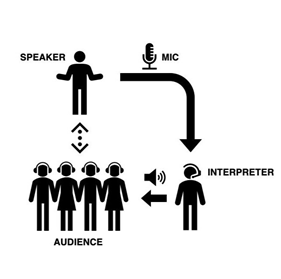You may consider the following modes of interpretation for your next event:
Consecutive interpreting

Consecutive interpreting
Consecutive interpreting is interpreting after the speaker has finished talking. First the speaker talks, then the interpreter translates the relevant part. A speech or a meeting therefore takes twice as long with this interpretation mode.
It requires good presentation and self-confidence in consecutive interpreting, because a consecutive interpreter often needs to appear next to an important figure.
Consecutive interpreting does not require equipment therefore the cost is often lower. However, it is not popular for big events as the time required is considerably longer. It is often used at more small-scale events, private meetings, interviews, medical visits, etc.
Simultaneous Interpreting

Simultaneous interpreting
Simultaneous interpretation is one of the most difficult skills in the language services industry. In simultaneous interpreting, the interpreter listens and speaks at the same time as the speaker. Interpreters listen to the source speech through headphone and deliver the interpretation through a microphone. You often see this interpretation mode at conferences and events of larger scale. Simultaneous interpreting is very intense and focused and is usually done in pairs, so interpreters can take breaks every 20-30 minutes.
Whisper interpreting

Whisper interpreting
Whisper interpreting (also known as chuchotage) is used when a full audio setup for simultaneous interpreting is not available. In this situation, the interpreter listens to the presenter by ear, and then whispers the translation to an attendee, so that their voice does not impact the presentation.
There is also portable interpreting equipment for whisper interpreting: a small pocket transmitter with a lapel or around the neck microphone and receivers with headphones for the attendees. This way an interpreter can translate the presentation to multiple attendees.
